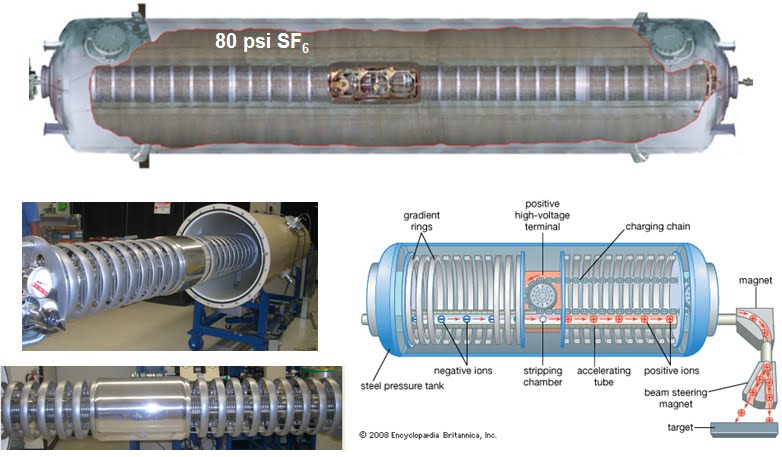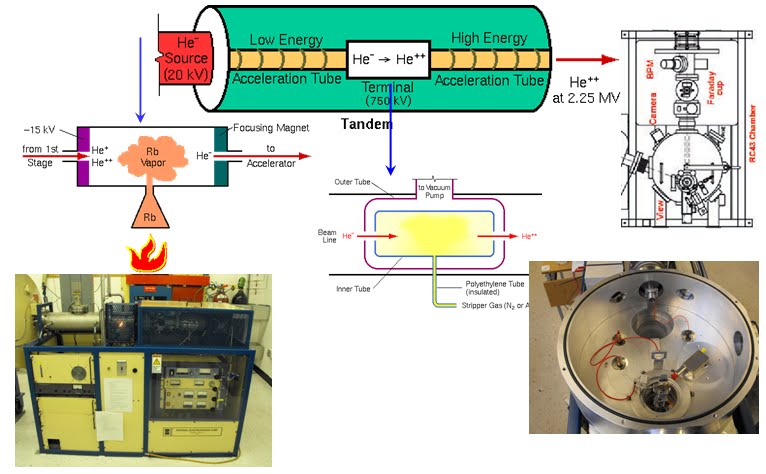Facility for University-based Reactor and Nuclear Astrophysics Capture Experiments (FURNACE)
This new Facility for University-based Reactor and Nuclear Astrophysics Capture Experiments (FURNACE) will perform nuclear data experiments needed to improve modeling of fast reactors and astrophysicsl nucleosynthesis in the 1-1000 keV energy region. Proton and Deuteron beams from the new Pelletron at the UC Berkeley Department of Nuclear Engineering will drive neutron-producing reactions on Z<7 targets and perform target-in/target-out activation experiments accompanied by the use of high-resolution gamma-ray spectroscopy techniques.
Accelerator (Pelletron)
The main part of the system is a National Electrostatics Corporation (NEC) model 5SDH Pelletron tandem accelerator. The accelerator produces a stable terminal voltage of up to 1.7 MV using a single metal pellet chain. A negative ion beam from an injector at one end of the tandem is accelerated to the terminal where it is stripped in a gas canal to positive charge states which are then further accelerated to the other end of the tandem. The high energy beam is analyzed by bending 15° in a switching magnet which insures high beam purity in the target chamber.

Figure 1 Schematic depicting the inside of the Pelletron tandem accelerator.
The negative ions are produced in an injector which uses a radiofrequency (RF) source to produce positive ions which then pass through an alkali vapor to produce negative ions. The source parameters are controlled via manually operated control rods. The negative ions are analyzed and focused into the tandem accelerator.
This accelerator includes an electron suppression tube and X-ray shielding to ensure that radiation levels are less than 2.0 mr/hr (0.02 mSv/hr) everywhere at the tank wall and to less than 0.25 mr/hr (0.0025 mSv/hr) at 1 m from the tank wall for ion beams guaranteed.

Figure 2 Pelletron accelerator schematic.